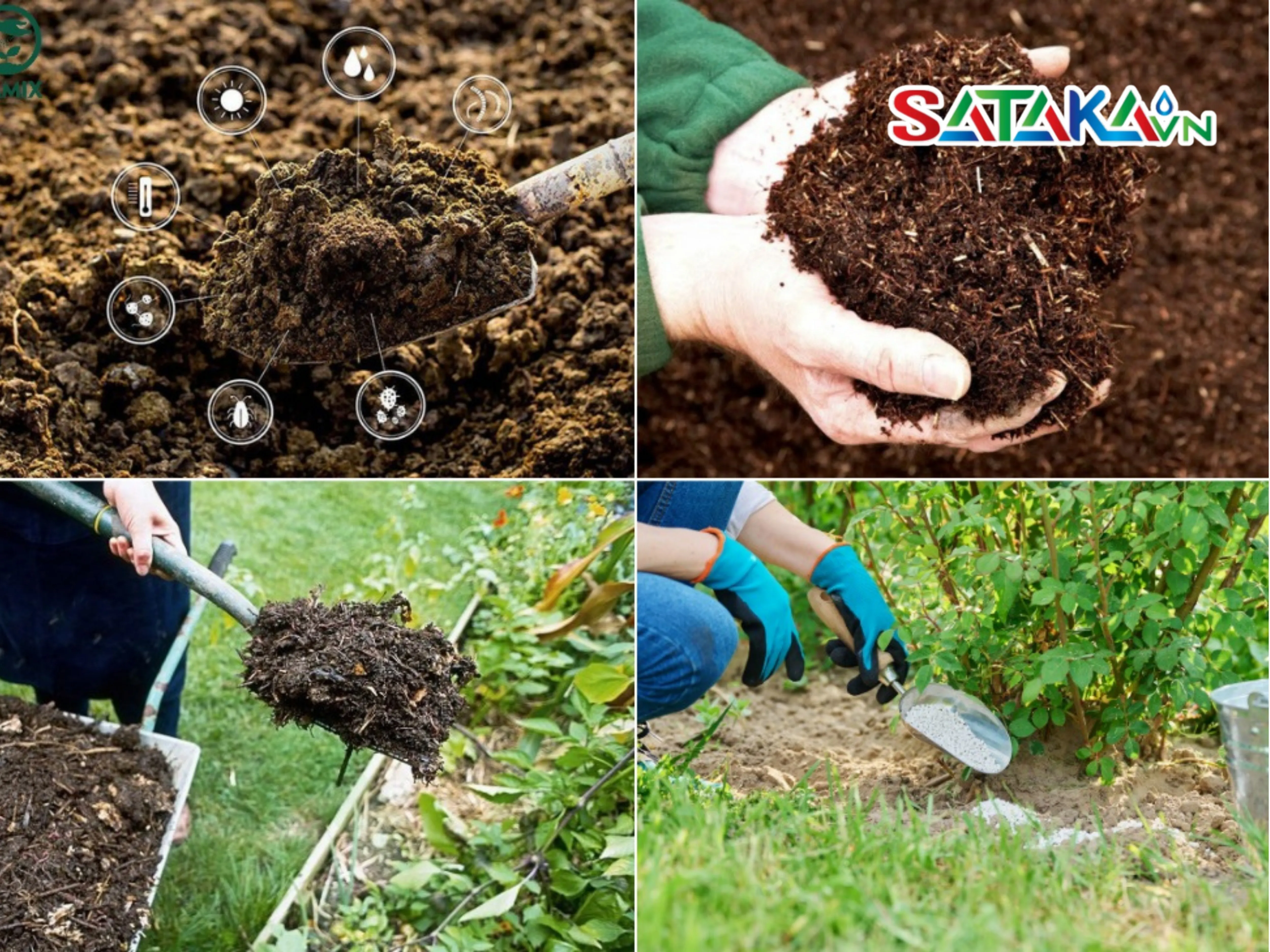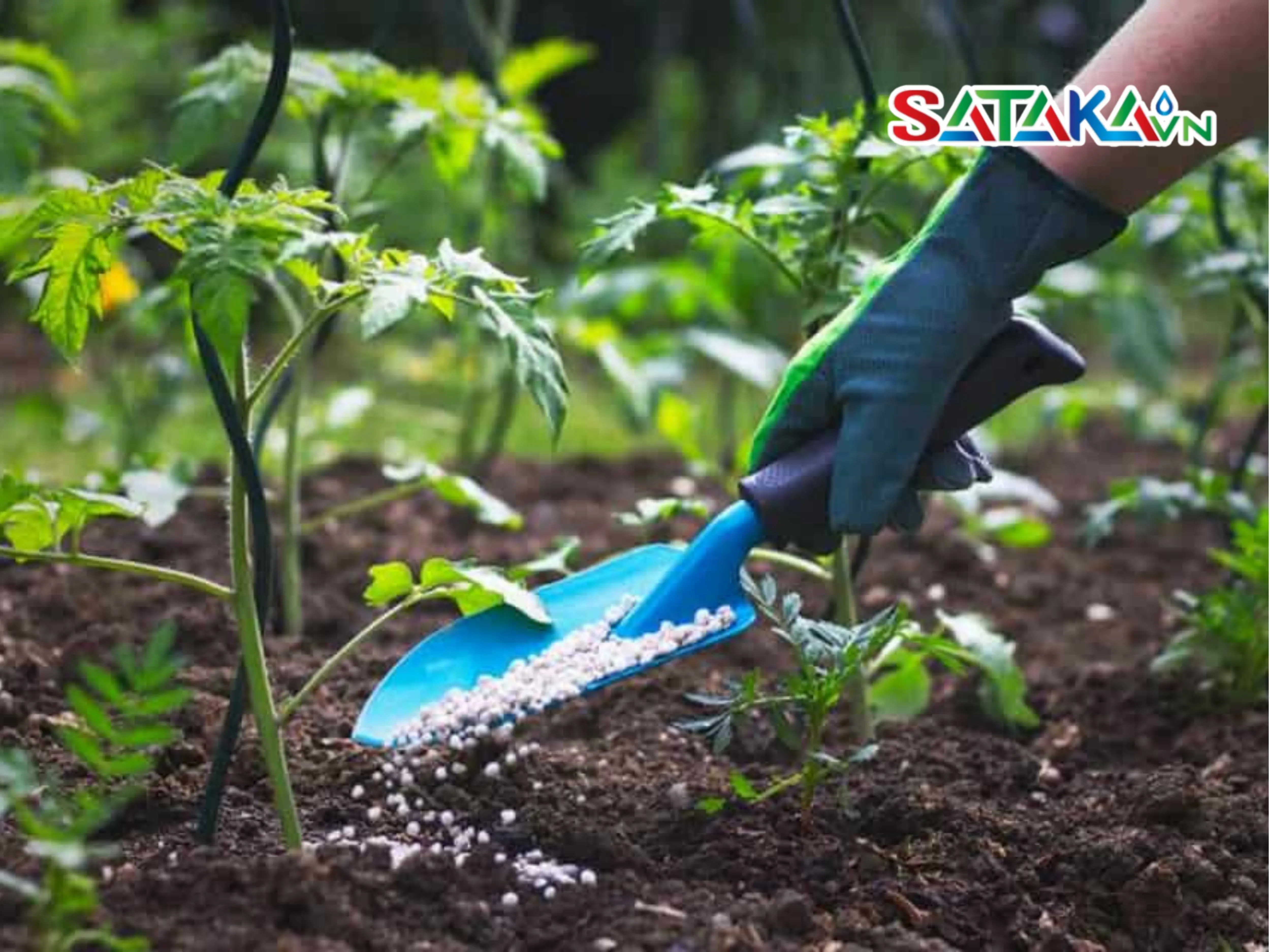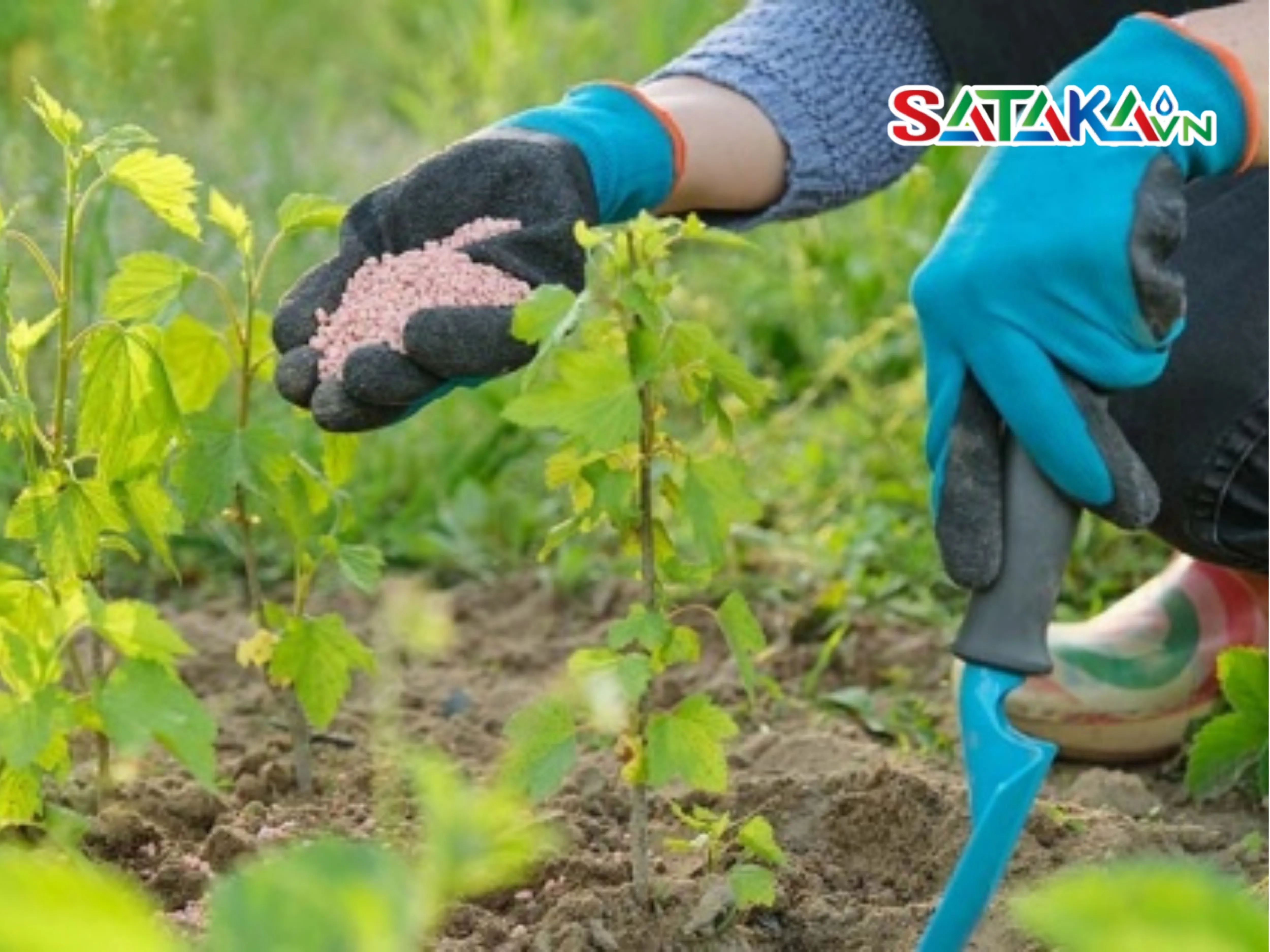Fertilizer Selection Criteria guides farmers on how to choose the right fertilizer for each crop. This Sataka article highlights key factors to optimize nutrition, boost yields, improve crop quality, and promote sustainable agriculture for long-term success in farming.
Fertilizers play a decisive role in agricultural cultivation, serving as a key factor that helps crops grow healthily and achieve high yields. Choosing fertilizers according to proper Fertilizer selection criteria not only helps farmers, distributors, and farms optimize investment costs but also ensures product quality, protects the environment, and preserves farmland. Conversely, using substandard fertilizers can lead to serious consequences such as reduced yield, soil pollution, and economic losses. Therefore, understanding and correctly applying Fertilizer selection criteria is a crucial step that determines the success of each crop season.
Selecting fertilizers based on standards is not optional but has become a mandatory condition in modern agriculture. We must clearly understand the importance of this decision.
Standard fertilizers provide sufficient and balanced nutrients necessary for crops. When nourished properly, plants grow vigorously, have better disease resistance, and produce 20–30% higher yields compared to using substandard fertilizers. High-quality fertilizers also improve flavor, color, and uniformity of agricultural products, enhancing their commercial value.
Poor-quality fertilizers often contain impurities or heavy metal levels exceeding permissible limits, leading to toxic accumulation in the soil and degrading the farming environment. Economically, investing in substandard fertilizers can result in:

Why should fertilizers be chosen according to standards?
Each crop has different nutritional needs at various growth stages. At the same time, soils also have unique characteristics that require improvement with appropriate fertilizers. For example, acidic soils need fertilizers that can adjust pH, while depleted soils need fertilizers rich in organic matter to restore structure.
Choosing fertilizers according to standards ensures the right nutrients are provided at the right time, tailored to each crop type and soil condition.
To choose fertilizers effectively, we must rely on specific, scientific standards that suit cultivation conditions. Below are the most important criteria for selecting fertilizers.
Each crop’s nutritional needs vary and change across different growth stages. Quality fertilizers must provide the correct type and amount of nutrients:
When selecting fertilizers, special attention should be given to the nutrient composition clearly stated on the packaging. Quality fertilizers usually include:
The ratios of these components must be specified as exact percentages, not vague or generalized. Standard fertilizers must contain the declared nutrient levels, with errors not exceeding Vietnam’s national standards (TCVN).
One of the most important standards for fertilizer selection is verifying origin and certification:
Additionally, registration numbers, batch numbers, and expiration dates must be clearly printed on the packaging. These details ensure traceability and product quality.
Fertilizer selection standards also depend on soil characteristics:
To apply this standard effectively, farmers should test soil periodically (every 1–2 years) to determine its condition and develop an appropriate fertilization strategy.
Quality fertilizers must meet standards for physical properties and safety:
Safe fertilizers must disclose these specifications and are usually periodically inspected by regulatory authorities.
To ensure fertilizers meet standards, technical indicators should be checked according to Vietnam’s regulations (QCVN) and standards (TCVN):
These indicators help objectively assess fertilizer quality and ensure effectiveness when applied.
The final standard in fertilizer selection is evaluating the reputation of manufacturers and distributors:
When purchasing fertilizers from trusted distributors like Sataka, users are assured of product quality and also receive professional consultation to choose the most suitable fertilizers for their cultivation needs.

Standards for fertilizer selection
After understanding the standards for selecting fertilizers, we also need to master practical experience to effectively apply them during purchasing and usage.
Before choosing fertilizers, it is necessary to clearly determine:
With different production goals, the standards for fertilizer selection also vary. For example, organic farming requires fertilizers with organic certification, while intensive farming may require fertilizers with higher nutrient content.
An important experience in choosing fertilizers according to standards is personally checking the products:
For distributors, it is essential to request suppliers to provide complete quality certificates, origin documentation, and product testing results.
To apply fertilizer selection standards correctly:
Experts and reputable dealers often have practical experience regarding the effectiveness of fertilizers across different crops and cultivation conditions.
A key practice in applying fertilizer standards is conducting trials:
This method allows an objective assessment of fertilizer effectiveness before large-scale investment, minimizing risks.
Applying fertilizer selection standards does not stop at the purchasing stage; it requires continuous monitoring:
This is an ongoing process that helps users optimize fertilizer effectiveness and improve selection experience for future crops.
See more: Biological Preparation Processing – Sustainable Agricultural Solutions with Sataka
Practical Experience in Choosing Fertilizers (Wholesale/Retail) for Dealers, Farmers, and Farms.
Even with knowledge of fertilizer standards, many still make mistakes that reduce effectiveness and cause unnecessary losses.
A common mistake is relying too heavily on advertisements without verification:
Solution: Always demand scientific evidence, trial results, and feedback from users. Evaluate fertilizer effectiveness based on clear standards, not only advertising claims.
While saving costs is important, buying cheap fertilizers with unclear origin often leads to:
Solution: Apply the principle “value equals quality.” Calculate economic efficiency based on harvest results, not just purchase price.
Many farmers use the same fertilizer for the entire cultivation cycle without considering crop stages:
Solution: Understand nutritional needs of crops at each growth stage and soil properties. Apply fertilizer selection standards suitable for each stage of crop development.

Common Mistakes in Fertilizer Selection.
Many people overlook checking fertilizer expiration dates and technical certifications:
Solution: Always check expiration dates, storage conditions, and technical certifications before buying. Request sellers to provide full quality certificates and comply with established fertilizer standards.
Standards for fertilizer selection play a decisive role in farming efficiency and sustainable agricultural development. Choosing quality fertilizers not only optimizes yield and crop quality but also protects the environment, farmland, and consumer health.
Farmers, dealers, and farms must strictly apply standards regarding nutrient composition, safety, origin, and suitability for cultivation conditions. At the same time, they should avoid common mistakes such as relying on unchecked advertisements, choosing cheap fertilizers with unknown origin, using the wrong type, or ignoring expiration dates.
Adhering to fertilizer selection standards acts as insurance for the success of each crop, ensuring sustainable agriculture and optimal profits for producers. Contact Sataka – a trusted company in the agricultural fertilizer sector – for consultation and to select the most suitable products for your cultivation needs.
SATAKA VIETNAM JOINT STOCK COMPANY
📍 Address: 246 Nguyễn Kim Cương, Tân Thạnh Đông Commune, Củ Chi District, Ho Chi Minh City
📞 Hotline: 0856.555.585 | 0789.917.927
🌐 Website: https://sataka.com.vn/